20001004-rodriguez-mw04-collection-001
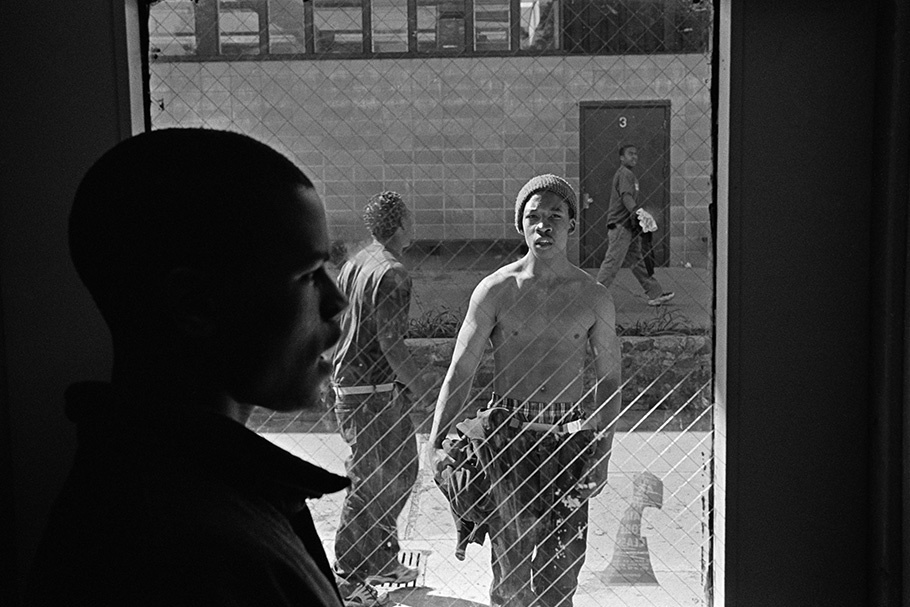
La Honda, California. At the Log Cabin Ranch Juvenile facility, Kethan Hubbard attends a writing workshop and must endure heckling from some of his peers for pursuing his education. He will be released in a few days to compete in a National Poetry Slam in Washington, D.C.
20001004-rodriguez-mw04-collection-002
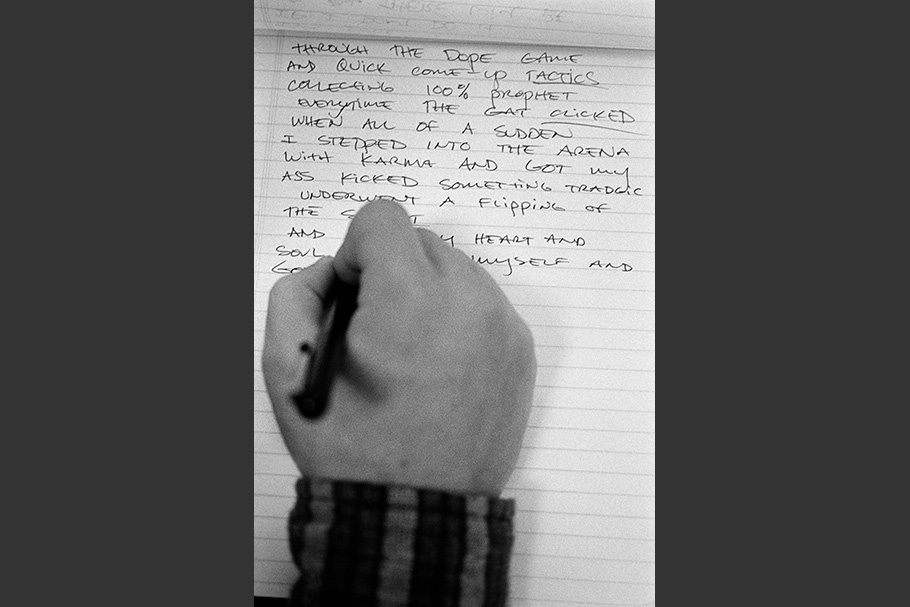
San Francisco, California. At the Pacific News Service, Lance, age 20, uses the written word to express himself. Lance entered the criminal justice system at age five, when he set his house on fire. Today, Lance is working as a counselor at a juvenile facility.
20001004-rodriguez-mw04-collection-003
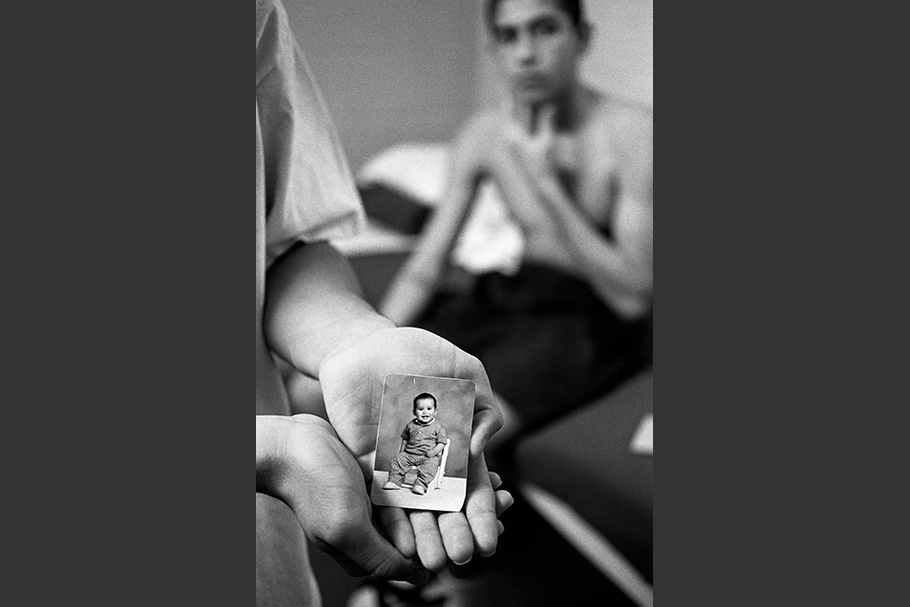
San Jose, California. At the Santa Clara County Juvenile Hall, Anthony Smith cradles a photograph of his son. Ricky, his cellmate, sits in the background.
20001004-rodriguez-mw04-collection-004
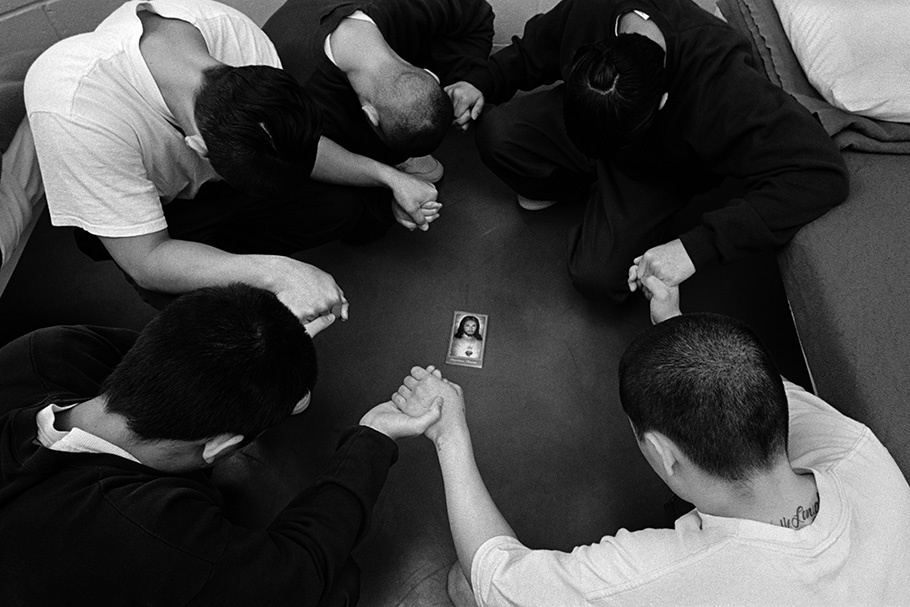
San Jose, California. At the Santa Clara County Juvenile Hall, Edward Vargas (bottom right) and his cellmates, some who have had been incarcerated repeatedly, hold hands and pray for each other. Word has come back that Edward is to be tried as an adult for rape, and will be sent to San Quentin for 13 years.
20001004-rodriguez-mw04-collection-005

San Jose, California. At the Santa Clara County Juvenile Court, Judge Hyman works on scheduling the many court cases he deals with daily. At the table is the public defender, district attorney, probation officer, and court officer.
20001004-rodriguez-mw04-collection-006
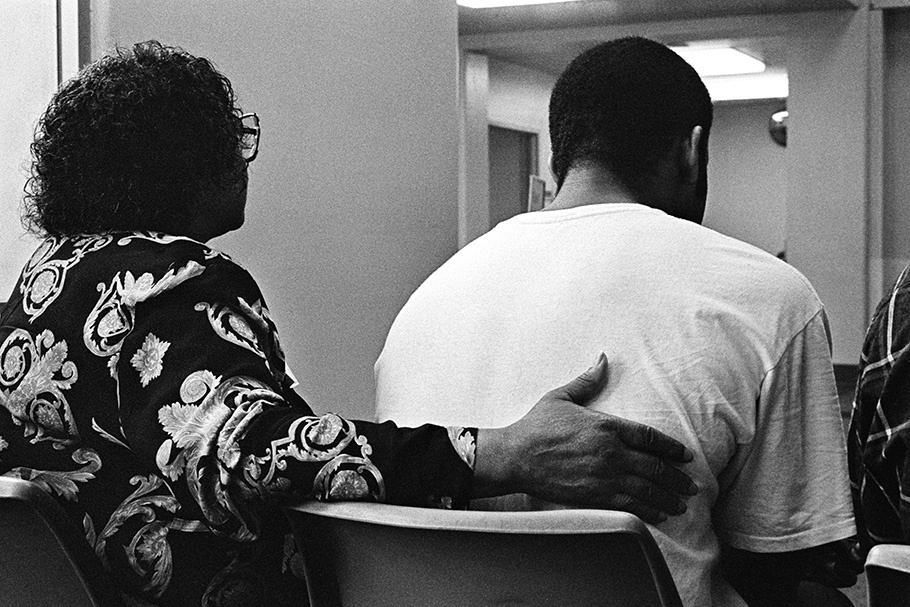
San Jose, California. At the Santa Clara County Juvenile Court grandmother tries to comfort her grandson before his trial.
20001004-rodriguez-mw04-collection-007
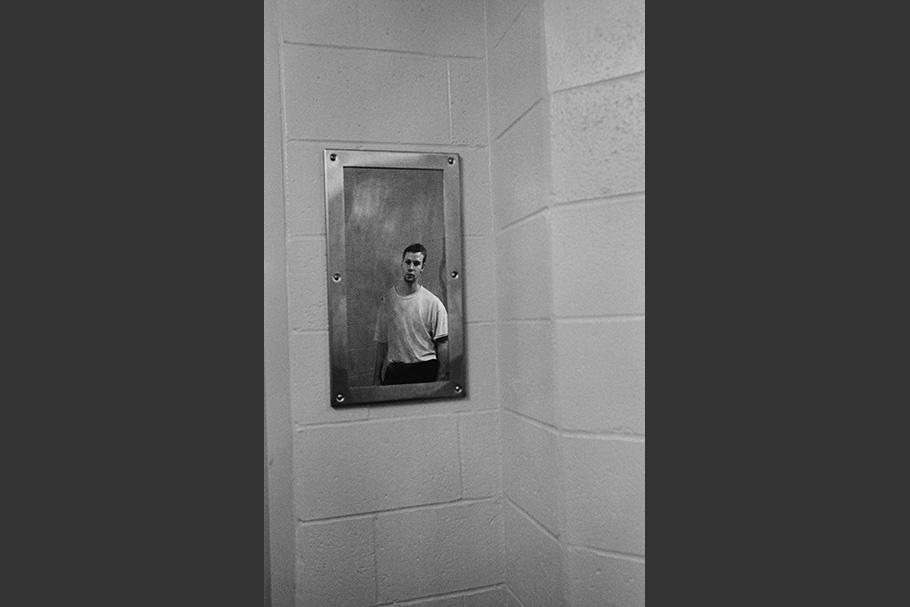
San Jose, California. Inside Santa Clara County Juvenile Hall B8 unit. Chris Cooke, 17 years old, a white supremacist, paces awaiting sentencing. His dream was to enlist in the military. His father is a retired Navy officer and was a member of the Aryan Brotherhood. Chris joined the Willow Glen Skinheads at 14. At the party celebrating his army enlistment, he became drunk and joined friends in firebombing a house believed to belong to a Jewish family. He was arrested for committing hate crimes, vandalism, and conspiracy. The owner of the house, turned out to be Catholic and a judge.
20001004-rodriguez-mw04-collection-008
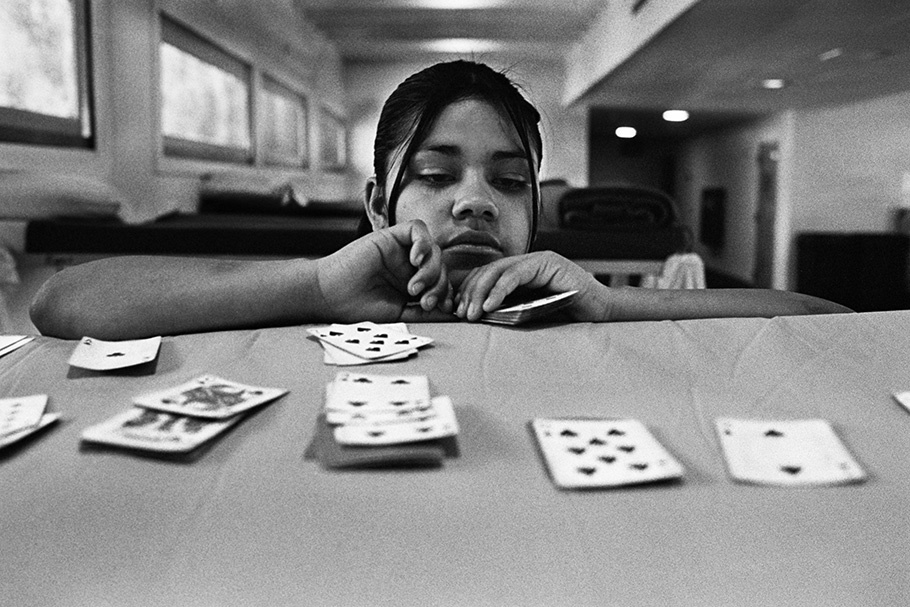
San Jose, California. At the Santa Clara County Juvenile Hall-the Girl's unit; Katrina Garcia, 15 years old, is playing cards on her bunk. She says, "I have been in foster homes for 12 years, I am basically a ward of the state. My mom is on drugs and my dad is in prison. I have only had physical contact with my father once back in September 7, 1998, at his brother's funeral. He came in red overalls and handcuffs with eight police officers. It was painful. They won't let me send letters to him because I am locked up here." Katrina is now in a group home.
20001004-rodriguez-mw04-collection-009
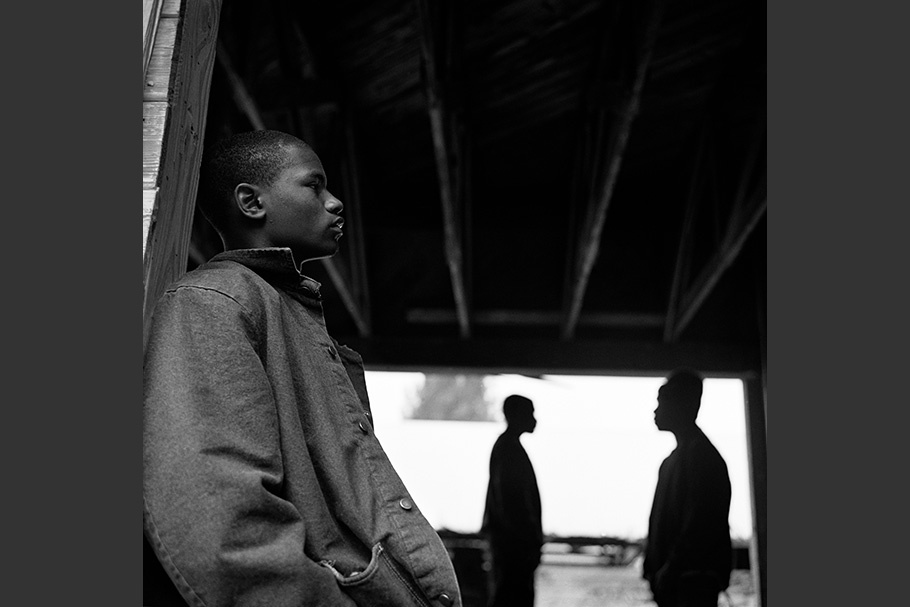
La Honda, California. Kethan Hubbard sits in an old barn on the grounds of the Log Cabin Ranch Juvenile facility.
20001004-rodriguez-mw04-collection-010
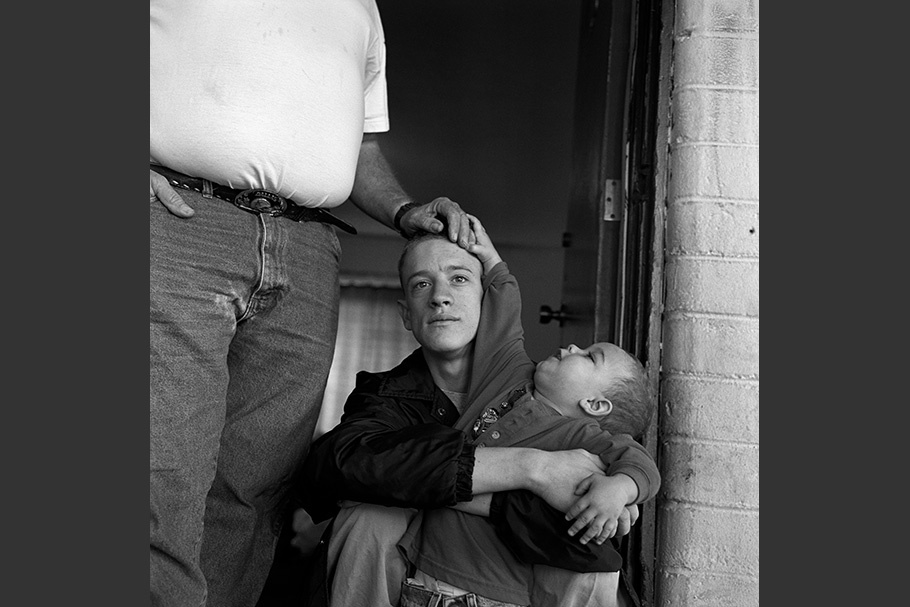
San Jose, California. At the Palm Trees Inn, Michael Jackson and his nephew sit in the doorway of their hotel room with his father, Jerry. Michael is 17 years old and suffers from Attention Deficit Hyperactivity Disorder and is mildly mentally disabled. He is on Ritalin, a drug commonly prescribed for such disorders. He is under house arrest and wears an electronic monitoring device. He was arrested for possession of a knife and violating probation. He is living in a hotel room with his family of seven.
20001004-rodriguez-mw04-collection-011
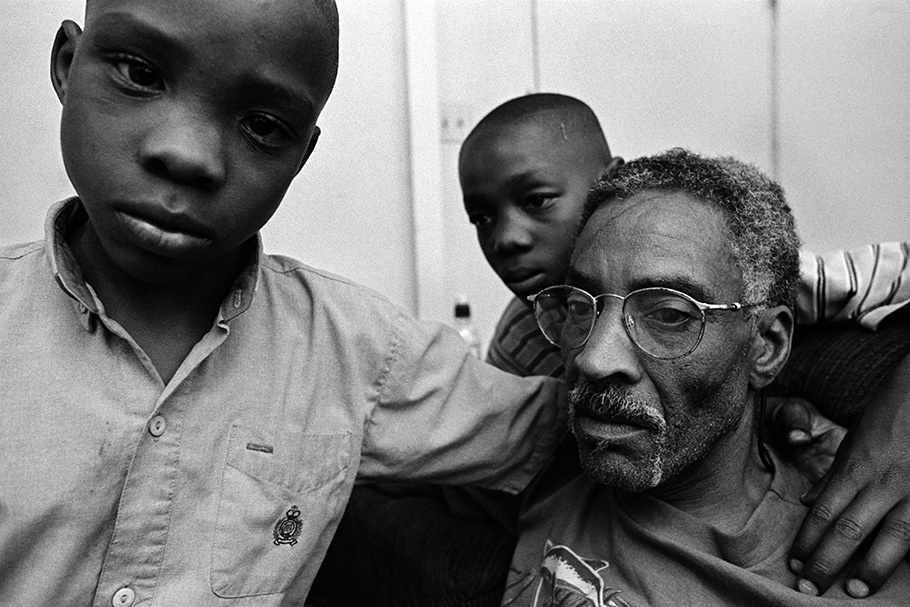
Richmond, California. A grandfather holds his grandchildren.
20001004-rodriguez-mw04-collection-012

San Francisco, California. In the Mission district, Pee Wee's young family hangs out on the sidewalk. He is a member of the 19th Street Gang.
20001004-rodriguez-mw04-collection-013
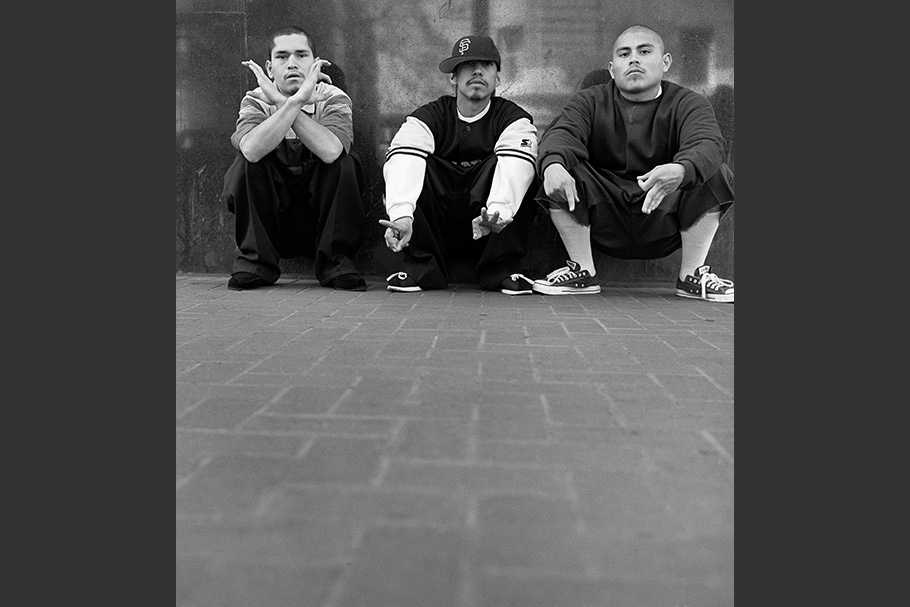
San Francisco, California. Pee Wee and Carlos and some of the 19th Street Gang hang out on Mission Street.
20001004-rodriguez-mw04-collection-014
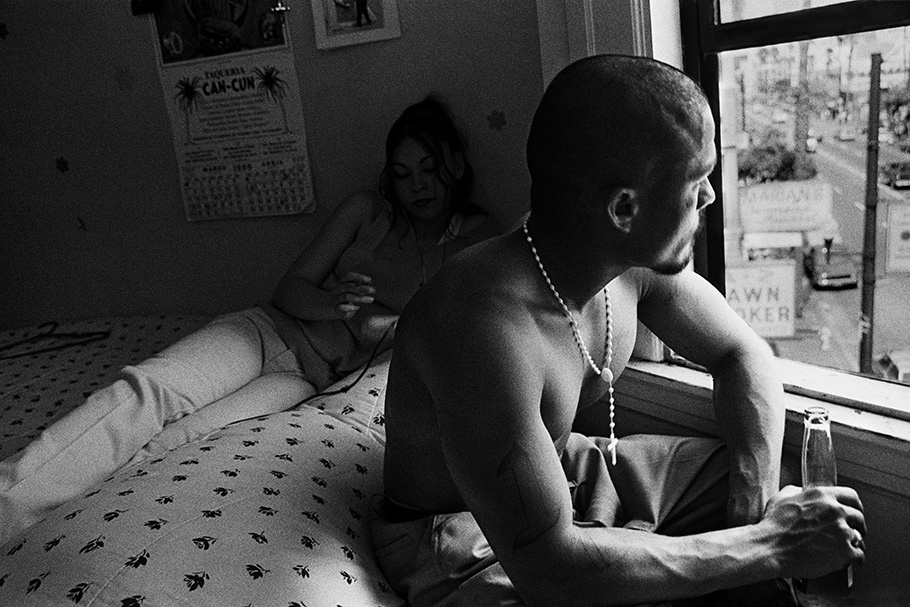
San Francisco, California. Gregorio, a member of the 19th Street Gang, left Acapulco, Mexico, and was a migrant farmworker before arriving in San Francisco. He peers out of his hotel window overlooking the Mission District. His girlfriend sits on the bed. He has a view of 16th and Mission Streets, the corner most notorious for drug dealing and prostitution in the Mission. After coming out of juvenile hall he had no family and no place to live so he has been living in hotels from week to week with his girlfriend.
20001004-rodriguez-mw04-collection-015
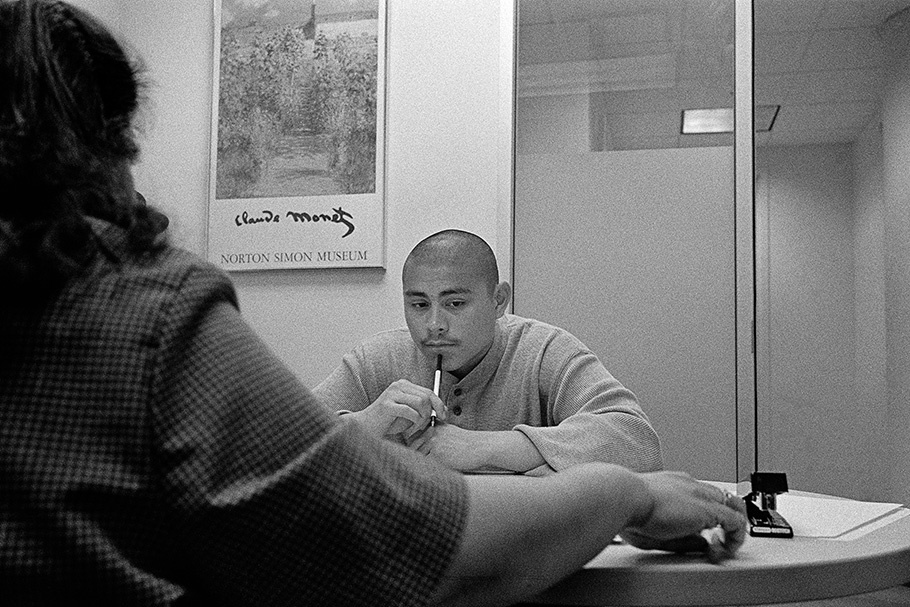
San Francisco, California. Carlos surveys an array of intimidating paperwork during an appointment with a college financial aid counselor at Heald College (Schools of Business and Technology). He later decides not to go to the school because he was concerned about the student loans. The following week he took a job in an auto body repair shop as an apprentice. Months later he had another job as a security guard.
20001004-rodriguez-mw04-collection-016
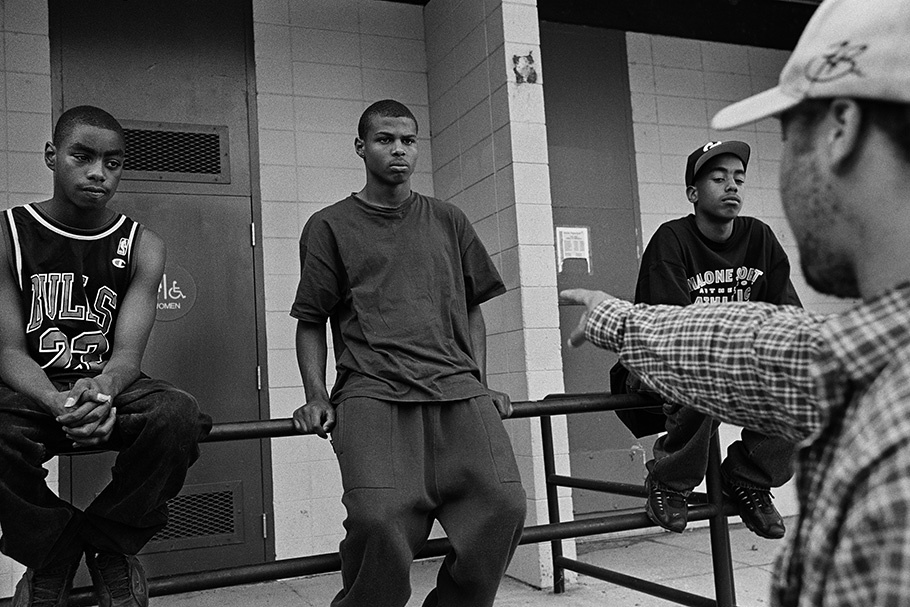
Hunter's Point, San Francisco. Charles Jones, a Pacific News Service journalist, discusses Proposition 21, the "Juvenile Crime Control and Gang Prevention Act." One of the kids he is talking to has done time at juvenile hall.
20001004-rodriguez-mw04-collection-017
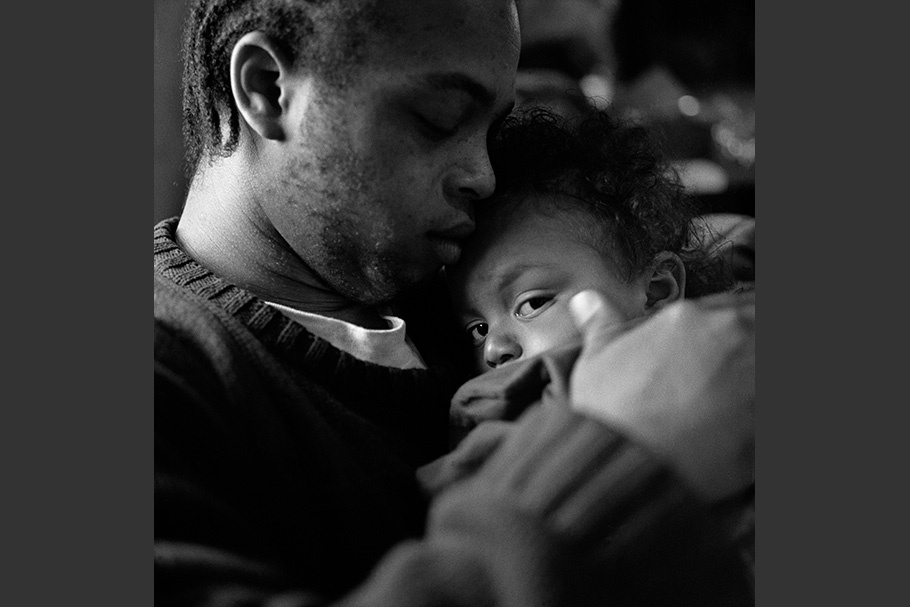
Oakland, California. Charles holds his son. He takes on the responsibility of caring for his children while their mother is working at a part time job. Charles grew up in Oakland with six brothers and sisters. When he was four years old, he shot himself in the hand trying to protect his mother, who was being physically abused by his father. By the age of twelve, he was already in trouble. Presently, Charles is a journalist for the Pacific News Service and lives in a hotel with his family.
Joseph Rodriguez is the author of four books. His latest book, East Side Stories: Gang Life in East L.A., is a documentary about gang life, published in 1998 by powerHouse Books, New York. His next book, entitled Juvenile, will be published in 2001 by powerHouse. He is affiliated with the Pacific News Service and is represented by Black Star photo agency and Mira Bildarkiv in Sweden. His work has appeared in numerous publications including National Geographic, the New York Times Magazine, Esquire, Time, and GEO. He has exhibited widely in the United States, Sweden, and Mexico. He won Pictures of the Year from the National Press Photographers Association in 1990, 1992, and 1996. He has received grants from the National Endowment for the Arts, Rockefeller Foundation, Open Society Foundations’ Center on Crime, Communities and Culture, Mother Jones International Fund for Documentary Photography, and Konstnarsnamnden Stipendium.
Joseph Rodriguez
A couple of years ago my mother was cleaning out my old room when she came across some letters that I had written back in the early 70s while I was incarcerated at Rikers Island. They were the usual prison letters of remorse and forgiveness. I look at these letters now and remember how I felt as a young man struggling to find my way. Coming out of prison was a daunting experience. I was placed on probation for drug possession. There was little support for my transition back into society—the only advice my probation officer gave me was, “You better get a job.” But I did get a second chance; I found photography. Eventually I moved out of the community where I had gotten into trouble, educated myself, and became a productive member of society. These experiences became my motivation for this documentary project.
Recently the FBI reported that youth violence in inner cities is declining. However, even as violence declines, incarceration rates rise and prison terms lengthen. The drive for harsher penalties races throughout the country. In the wake of the school shootings in small town America, legislative bodies are mulling over proposals to try even 11-year-olds as adults. If the current rate of incarceration continues, one out of four of the generation born in 1997 will be in prison by the age of 21. Among the African American community, it will be one out of every two in that age group.
In 1999, I received a media fellowship from the Open Society Foundations’ Center on Crime, Communities, and Culture to document the lives of youthful offenders, their successes and their failures. I spent the year following over a dozen youth and documenting their experiences. Some are on probation or in group-homes while others are struggling to find meaningful employment or complete their education and yet others remain incarcerated.
Many of these kids face more obstacles today than when I was a teenager 34 years ago. They are children of the crack/cocaine era. They are growing up in a world with gangs and easy access to guns. And, they face a criminal justice system with a decreasing interest in offering second chances. All the same, I met many youth who are trying to change their lives despite these difficulties. These people are struggling to become reliable citizens–they have turned their experiences into motivation to turn their lives around and become upstanding citizens.
I would like to thank the Open Society Foundations for allowing me to exhibit part of this project, Sandy Close, David Inocencio from the Pacific News Service, and Christa Gannon of the Santa Clara County Public Defender’s Office.
—Joseph Rodriguez, October 2000